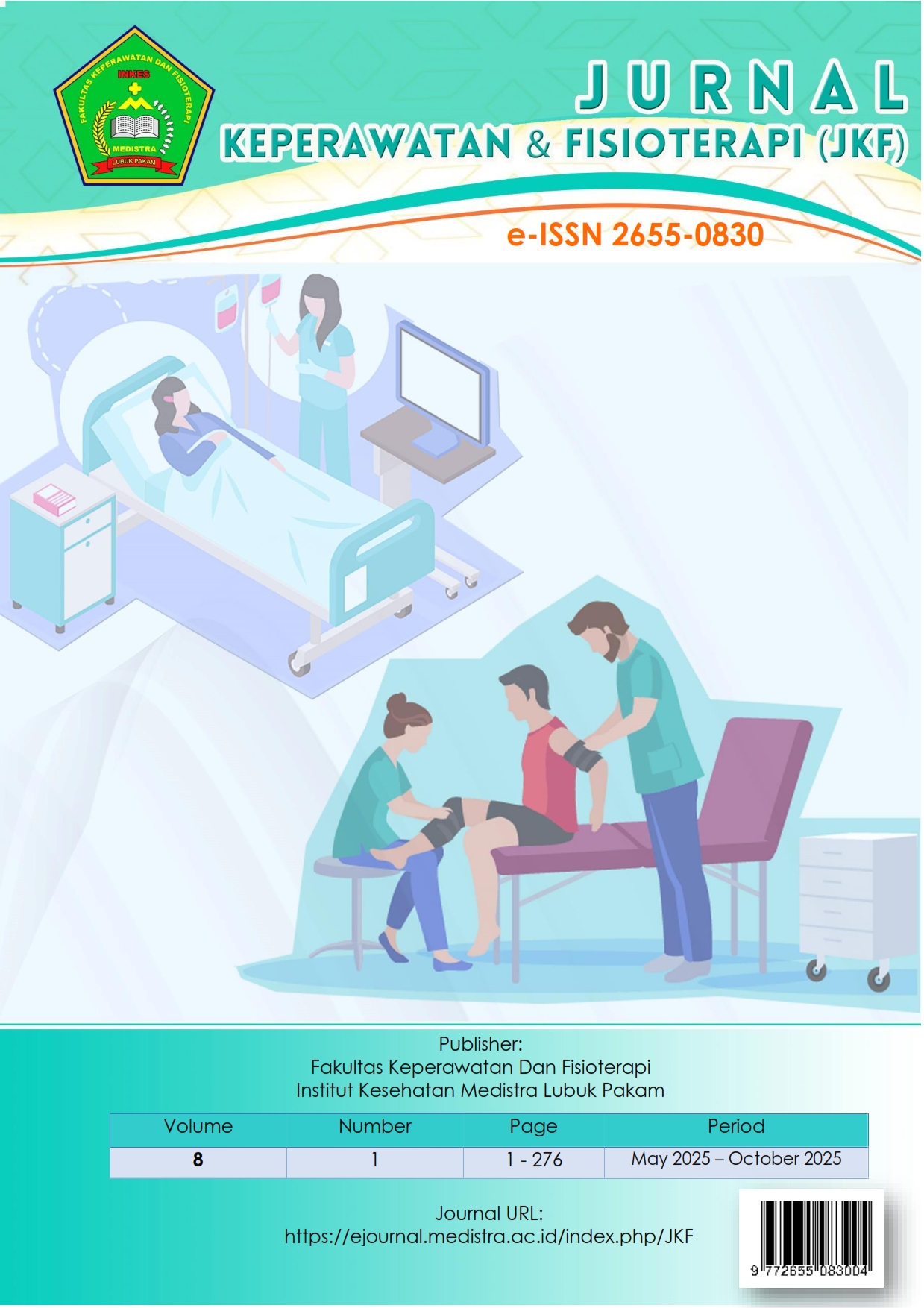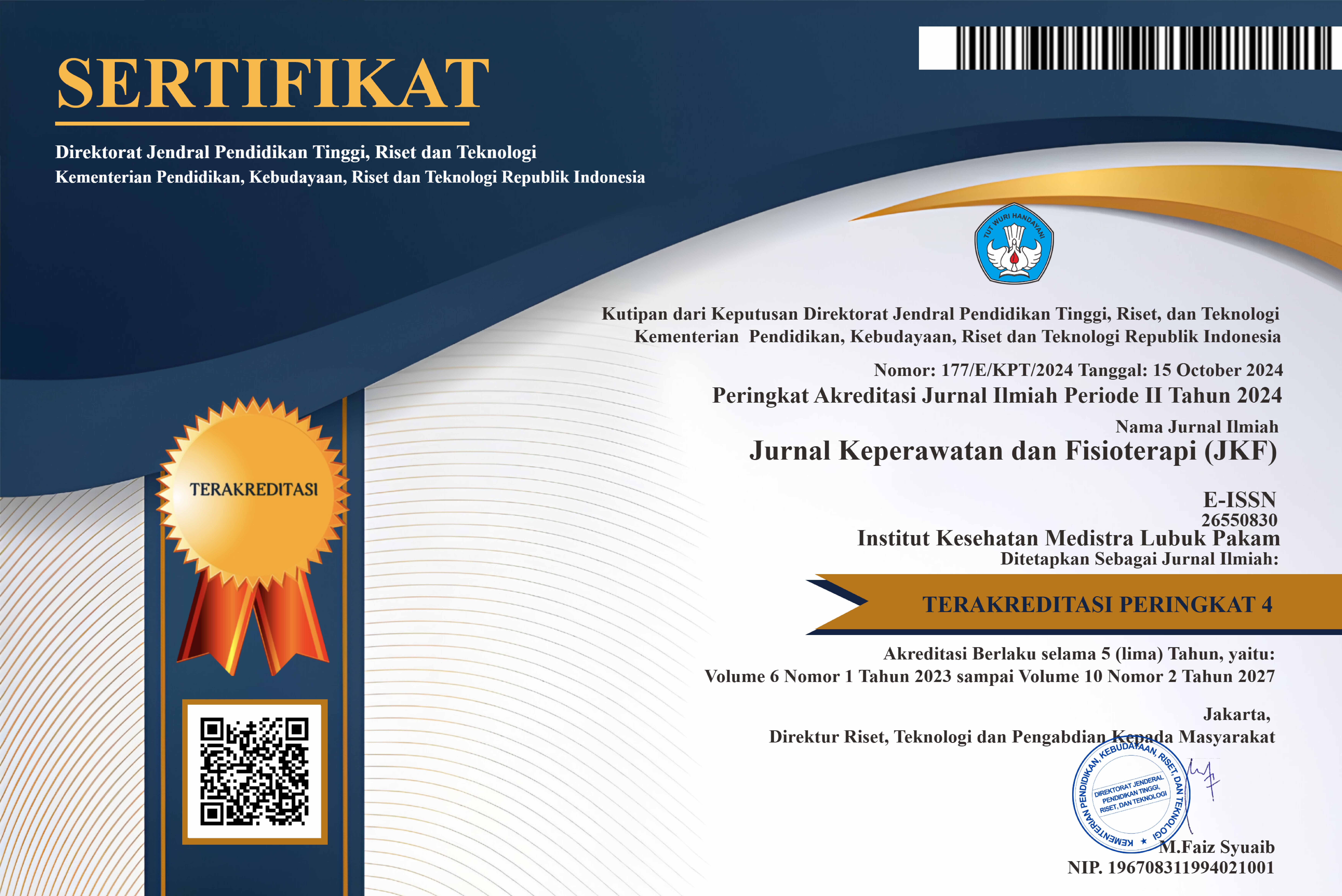The Effect of Trunk Stability Training on Increasing Segmental Values of Trunk Control in Cerebral Palsy Patients
DOI:
https://doi.org/10.35451/mxj5wj26Keywords:
Cerebral Palsy, Trunk Stability Training, Increasing Segmental Of Trunk Control ValuesAbstract
Background: Cerebral palsy (CP) is the most common cause of physical disability in children. One of the most frequently cited definitions of CP is 'a group of permanent disorders in the development of movement and posture, which causes activity limitations, caused by non-progressive disorders that occur in the development of the fetal or infant brain'. Non-pharmacological approaches such as exercise therapy have been shown to be effective in overcoming the problems of children with cerebral palsy. One of the exercise interventions that has the potential to increase trunk stabilization is Treatment Trunk Stability Training. This technique works synergistically to target the trunk, improve gross motor function, trunk control, and balance, and will help better functional recovery in children with cerebral palsy. Objective: To determine the effect of Trunk Stability Training on Increasing Segmental Of Trunk Control Values in Cerebral Palsy Patients. Methods: This study is a quantitative pre-experimental study with a one group pretest-posttest design. A total of 13 subjects diagnosed with cerebral palsy underwent a two-week intervention. Measurement of trunk stability or trunk control was performed using Segmental Of Trunk Control (SATCo). Data analysis used the Wilcoxon Signed-Rank test with a significance level of α = 0.05. Results: The results of the Shapiro-Wilk normality test showed that the data were not normally distributed (p <0.05). The results of the Wilcoxon test showed a p-value = 0.016 (<0.05), which means that there was a significant difference between the Segmental Of Trunk Control (SATCo) scores before and after the intervention. Conclusion: Trunk Stability Training treatment has been proven effective in strengthening or stabilizing the trunk/torso and improving trunk control in children with cerebral palsy.
Downloads
References
[1] Fiza Afifah et al. 2024. Cerebral Palsy : A Literatur Review. Jurnal Biologi Tropis. Indonesia
[2] Arafat, M., Shoukry, K., El-Maksoud, G. A., & Kilany, A.(2022). Effect of different levels of segmental trunk stability training on sitting and upper limbs functionsin children with bilateral spastic cerebral palsy. International Journal of Health Sciences, 6(S5), 10420–10436. https://doi.org/10.53730/ijhs.v6nS5.11299
[3] Nasim Ejraei & Aysel Yildiz Özer . 2022. Trunk Stabilization and Its Rehabilitative Effects in Children with Cerebral Palsy Serebral Palsili Çocuklarda Gövde Stabilizasyonu ve Rehabilitatif Etkileri. Abant Medical Journal. Türkiye
[4] Khadijah, S., Hidayati, A., Ningrum, A. M. T., Lathifani, N. R., Hanifah, Z. B., & Syinta, A. N. (2023). Neurodevelopmental Treatment dan Oral Stimulation pada Anak Cerebral Palsy: Case Report. Physiotherapy Health Science (PhysioHS), 6(2).
[5] Ejraei, N., & Özer, A. Y. (2022). Trunk Stabilization and Its Rehabilitative Effects in Children with Cerebral Palsy. Abant Medical Journal, Türkiye.
[6] Cunha, A. B., Rocha, N. A. C. F., & Mancini, M. C. (2021). Reliability and validity of Segmental Assessment of Trunk Control in children with cerebral palsy. Brazilian Journal of Physical Therapy, 25(5), 605–613.
[7] Talgeri, A. J., et al. (2023). Effect of Trunk Targeted Interventions on Functional Outcomes in Children with Cerebral Palsy – A Systematic Review. Physiotherapy Research International, 28(2), e1982.
[8] Park, E. S., Lee, K. J., & Cho, Y. S. (2023). Core Stability Exercise Improves Balance and Gross Motor Function in Children with Spastic Cerebral Palsy: A Randomized Controlled Trial. Children, 10(6), 987.
[9] Rahmawati, N., Susanto, T., & Aisyah, S. (2024). Efektivitas Latihan Stabilisasi Batang Tubuh terhadap Fungsi Keseimbangan Anak Cerebral Palsy di Indonesia. Jurnal Fisioterapi Indonesia, 12(1), 45–54.
[10] Lim, M. S., et al. (2025). The Effects of Trunk Intervention on Gross Motor Function in Children with Cerebral Palsy. MDPI Medical Sciences. MDPI
[11] Yan, S., et al. (2023). Improving Trunk Postural Control Facilitates Walking in Children with Cerebral Palsy. American Journal of Physical Medicine & Rehabilitation, 102(9), 795–802. Lippincott Journals
[12] Shakya, S., et al. (2024). The effect of novel Head and Trunk Control Rehabilitation (HATCoRe) device on postural control in children with cerebral palsy. (Artikel terindeks) ScienceDirect
[13] Arikan, Z., Yardimci-Lokmanoğlu, B. N., Mutlu, A., & Livanelioğlu, A. (2025). Segmental Trunk Control and Developmental Parameters in Children with Cerebral Palsy Aged 24 to 42 Months: A Cross-Sectional Study. Medicine, 104(6), e41486. Lippincott Journals
[14] Elshafey, M. A., Abdrabo, M. S., & Elnaggar, R. K. (2022). Effects of a core stability exercise program on balance and coordination in children with cerebellar ataxic cerebral palsy. Journal of Musculoskeletal & Neuronal Interactions. PMC
[15] Shin, J., et al. (2017). The effects of neck and trunk stabilization exercises on the static and dynamic trunk balance of children with cerebral palsy. PMC article. PMC
[16] Reddy, S., Balaji, G. K. (2020). Dynamic Surface Exercise Training in Improving Trunk Control and Gross Motor Functions among Children with Quadriplegic Cerebral Palsy. Journal of Pediatric Neurosciences. Lippincott Journals
[17] Ha, S. Y., & Sung, Y. H. (2024). Stimulus zones of Vojta method and trunk control in children with spastic-type cerebral palsy. Neuroscience & Biobehavioral Reviews / Applied neurology. ScienceDirect
Downloads
Published
Issue
Section
License
Copyright (c) 2025 SITI SARAH BINTANG, Elvida Rahmi, Helvi, Rizka Mutiara

This work is licensed under a Creative Commons Attribution 4.0 International License.
Copyright in each article is the property of the Author.


























